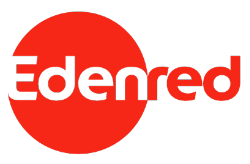Employee loyalty is one of the most desirable traits in the workforce. It shows genuine love and support for the organization and helps reduce attrition. The sense of reliability that a company can count on its employees to support them goes a long way in achieving success. This is even more important now than ever before. With the current uncertain business environment, employers need loyal employees to help them grow together.
The success of an employee loyalty program depends a lot on the platform you use. It’s easy to get confused when you are spoilt for choice when it comes to employee loyalty software. So, without further ado, here is a checklist that helps you choose the perfect employee loyalty program.
Make sure the program suits your organization
A company’s recognition program must suit the company culturally. Recognition programs can be a great way to express your company’s core values. So, choose a program where you can customize your program to fit your company requirements. If you are already using HRMS (Human Resource Management Software), ensure the program can be seamlessly integrated into the new platform.
Cost of the platform
Cost is always a major factor when it comes to any company initiative, and it is applicable for employee engagement platforms as well. The budget for a large enterprise will be more than a medium-sized enterprise, which will be higher than a small-sized enterprise. According to the Society for Human Resource Management, HR departments spend at least 1% of payroll on rewards and recognition.
While choosing a solution provider, look for hidden costs involved in the program such as transaction fees, yearly, monthly, or one-time expense. Additionally, consider the cost of running an in-house R&R program and gauge if it will be more feasible to select a software which is easy to understand and use so that it can be run without the need of an expert.
Quality and quantity of Outcomes
It is essential to establish the outcomes that you expect from the R&R program. One of the biggest challenges of building a culture of employee recognition is a lack of means to determine the ROI. To overcome this, you must have quantifiable outcomes and expectations. And you should be able to capture the desired results with sound analytics. Ensure that the loyalty software you choose offers the data in a systematic and hassle-free manner.
Make it fun and engaging
The program interface should be simple, smooth, and user-friendly. Since everyone in the company will be using the program, there shouldn’t be complicated steps involved. It’s equally important that the platform should be fun as well. Gamification in the R&R module, where employees can exchange rewards or appreciation, have an internal leaderboard, points allocation, etc. can boost participation.
Choosing the right way of rewards and recognition
Every employee is different, and their taste and needs vary. Thus, the reward that you give is likely not the one that they are looking for. Employees want the freedom and flexibility to choose their own rewards. Thus, it might make more sense to reward your workforce by gifting digital coupons or reward points. In this scenario, employees are free to choose and redeem the rewards they want to receive.
Ease of use
Most of the modern employee loyalty platforms come with a host of innovative features. However, more features can often result in the platform being extremely complex. This could result in the HR managers spending too much time and effort on the platform, which can adversely affect the success of the loyalty program. Therefore, it is crucial that the platform you choose can be automated, so that the loyalty programs can run in cruise control mode and reduce the effort needed from HR managers.
An employee loyalty platform should be designed to communicate and recognize that employees are your most valuable asset. Your program should have the ability to provide a full range of total recognition initiatives that not only boost their efficiency but also make them feel valued to be a part of your organization.





